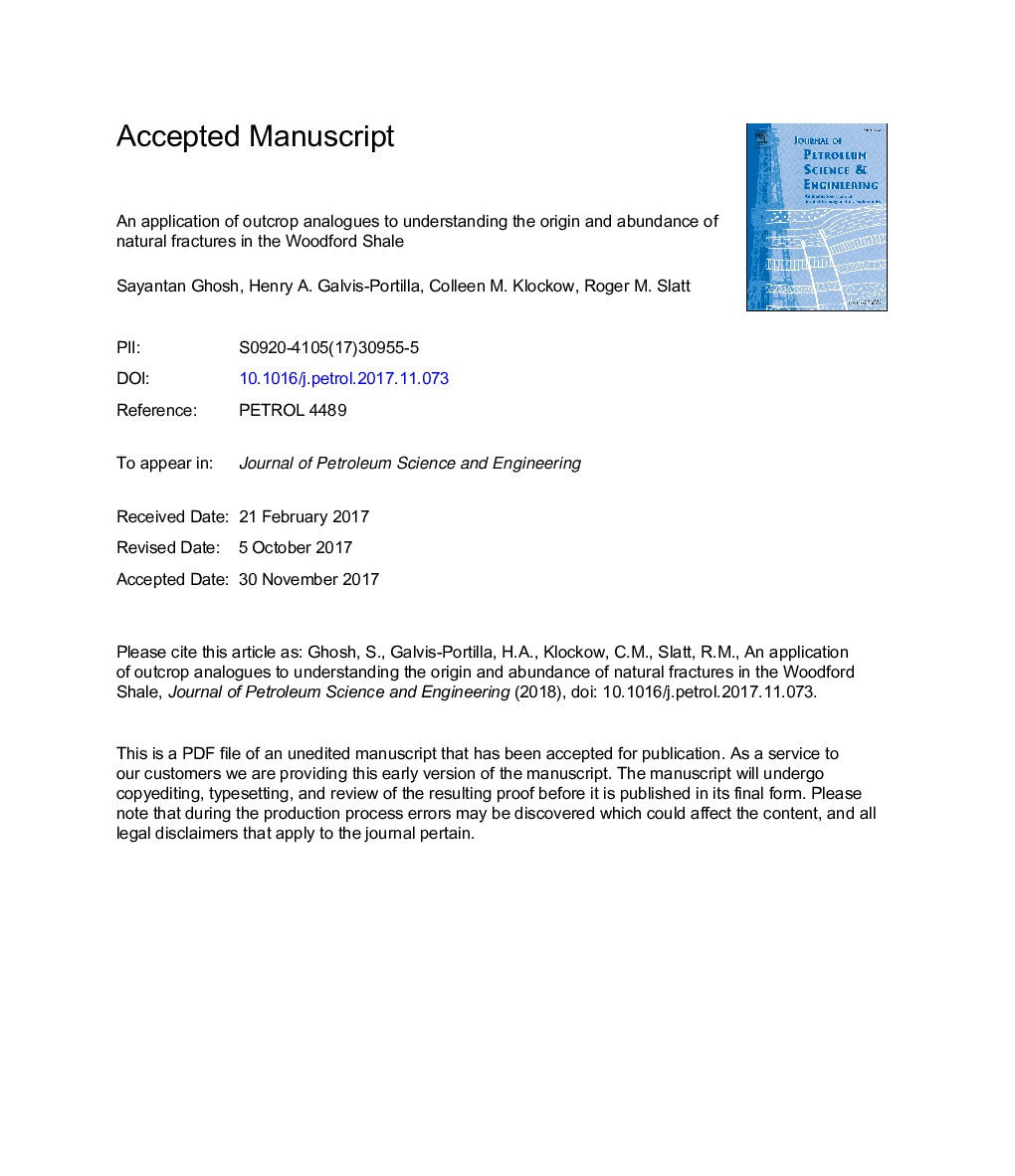| Article ID | Journal | Published Year | Pages | File Type |
|---|---|---|---|---|
| 8125261 | Journal of Petroleum Science and Engineering | 2018 | 33 Pages |
Abstract
Out of the several fracture sets identified in the Woodford Shale, two joint sets (E-W and NE-SW) were interpreted as the oldest sets based on crosscutting and fill. These sets date back to before the Mid-Virgilian Arbuckle Orogeny and likely have different generation timings. The relatively silica- and carbonate-rich beds primarily contain the E-W fractures and the highly clay- and organic-rich beds mainly contain the NE-SW fractures. The E-W and NE-SW sets origins (both not related to local structural bending) are likely more numerous in the flat subsurface compared to fractures sets whose origins are related to structural bending. These two fracture sets probably also control the fluid flow in the subsurface. Younger fracture sets show more influence of local folding and are overrepresented in the outcrops with tilted beds. Therefore, they do not likely control relatively flat subsurface fluid flow. Although some fractures (fold or non-fold related) only have one type of cement or bitumen fill, others have two types of fills, i.e., bitumen along with another cement, or two types of cement (non-bitumen) indicating that these fractures underwent more than one stage of opening. Also, a negative correlation between fracture intensity and bed thickness, and a positive relationship between fracture intensity and quartz/carbonate content exist in the studied location.
Keywords
Related Topics
Physical Sciences and Engineering
Earth and Planetary Sciences
Economic Geology
Authors
Sayantan Ghosh, Henry A. Galvis-Portilla, Colleen M. Klockow, Roger M. Slatt,
